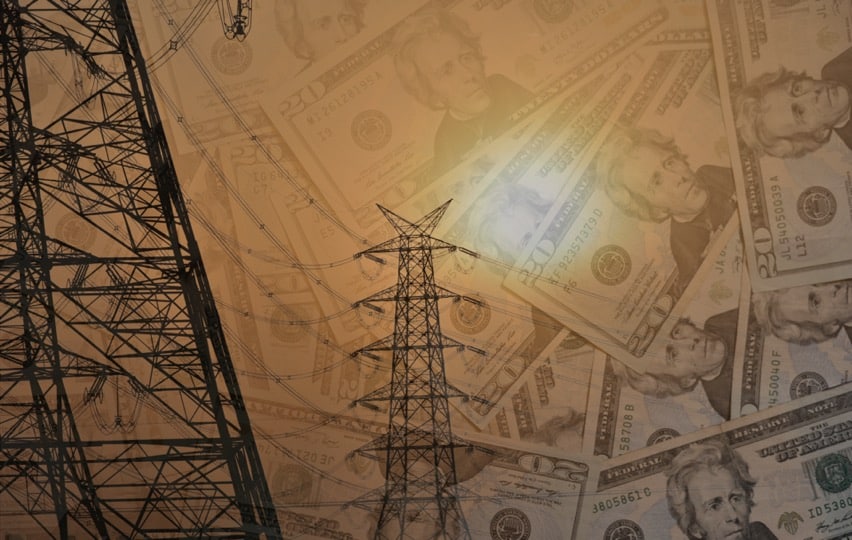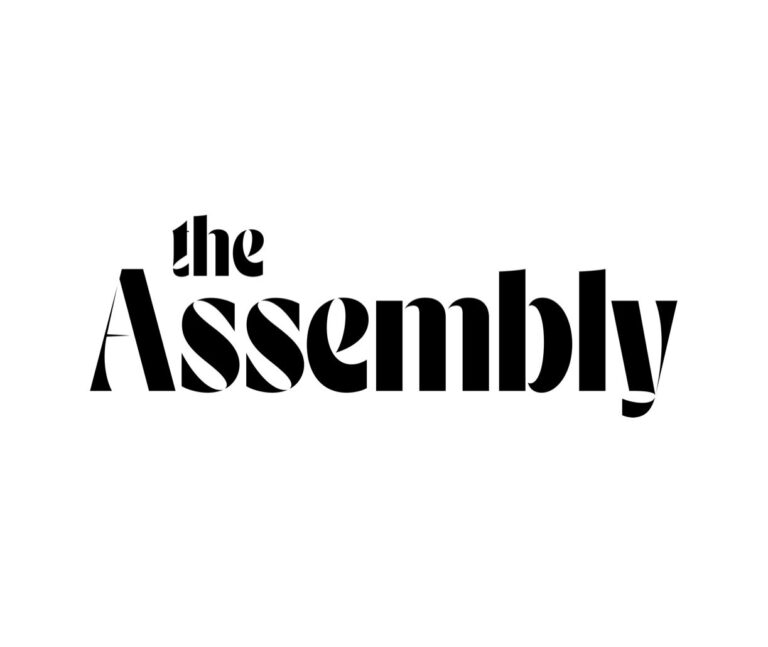FERC issues Notice of Inquiry to understand how it can protect customers from subsidizing trade association political activities

Federal energy regulators issued questions to the public last week as part of a process they may use to make it more difficult for the nation’s electric and gas utilities to force their customers to pay for their memberships in trade associations that exist to advocate for the utilities’ political agenda.
The Federal Energy Regulatory Commission (FERC) issued the Notice of Inquiry (NOI) to seek comment on the accounting treatment of trade association dues in response to a petition filed by the Center for Biological Diversity (CBD) to protect electric and gas customers of investor-owned utilities from paying for the trade associations’ political activities through their utility bills (Docket RM21-15-000).
FERC sets the accounting standards for the utility industry, and those standards have long recognized that ratepayers should not be forced to pay for their utility’s political activities as a general principle. The Commission’s standards, however, have not extended that principle to utility’s trade associations, despite the fact that those associations generally serve the political agendas of their member companies.
More than two dozen environmental, climate, clean energy, and consumer advocates filed comments while an additional 80 energy justice, environmental and community groups submitted a joint letter, all in support of the petition. Senators Whitehouse (D-R.I.), Merkley (D-OR), Sanders (I-Vt.), Reed (D-R.I.) and Markey (D-MA) also signed a letter supporting the petition. Utility trade associations including the Edison Electric Institute (EEI) and American Gas Association (AGA) opposed action on the petition, as did numerous individual utility companies.
The Commissioners voted in favor of issuing the NOI by a 3-1 margin, with Commissioner James Danly dissenting and new Commissioner Willie Phillips abstaining. At least two of the other Commissioners appeared to be supportive of the petition in their comments.
“Regulated utilities have every right to engage in outreach to influence public opinion on political issues. Presumptively, however, they do not have the right to pass through the costs of this outreach to their customers’ bills,” said Commissioner Clements. “At a minimum it is a good housekeeping exercise to ensure that customers are not inappropriately left footing the bill for their utility providers’ political aims simply because they were taken on by a trade association instead of the regulated entities themselves.”
Commissioner Christie said, “I respectfully disagree with any suggestion that First Amendment rights are implicated, much less threatened, by this inquiry … Nothing keeps the monopoly from spending money on First Amendment protected speech, including lobbying legislators and related public-relations activities, but its investors should pay those costs, not captive customers. That is the issue implicated by this NOI, which seeks to better understand whether costs permitted to be “above the line” (chargeable to customers) and those required to be “below the line” (chargeable to investors) for privately-owned companies are being treated as such on a transparent and consistent basis.”
The NOI seeks comment on 22 questions, including questions focused on possible FERC action to further define expense of civic, political and related activities. Initial comments are due 60 days after publication of the notice in the Federal Register, and reply comments are due 90 days after publication in the Federal Register.
Some of FERC’s questions request trade associations to provide information about their activities that they have been loath to answer when asked by regulators in the past. FERC requested details about how trade associations book costs of activities like researching and influencing legislators and legislation, researching and attempting to influence regulatory proceedings, influencing public opinion, and charitable spending.
Petition to create transparency and stop utilities from forcing customers to pay for trade association dues
CBD’s petition, filed in March, asked FERC to amend FERC’s accounting system, the Uniform Systems of Accounts (USofA), as they pertain to payments to trade associations engaged in influence-related activities. Trade associations, such as the Edison Electric Institute (EEI) and the American Gas Association (AGA), engage in and support political activities that ratepayers subsidize through their electric and gas utility bills.
Millions of dollars in payments to trade associations are currently recorded in a presumptively recoverable USofA account – Account 930.2 – and thus routinely charged to ratepayers by the utility companies.
Additionally, FERC’s annual report on enforcement has noted that the Division of Audits and Accounting is also constantly finding that public utilities, natural gas, and oil companies improperly recover membership dues, lobbying, and charitable contributions collected through formula rates.
CBD petitioned FERC to require that all industry association dues be recorded in the presumptively non-recoverable account, Account 426.4, which would shift the burden of proof on utilities to demonstrate why customers paying for trade association dues is fair, just, and reasonable.
The ruling from FERC would only directly impact regulation of electric transmission and gas pipeline rates, but since state public utility commissions (PUCs) also require that utilities use the USoA in their own regulation, a change might also make it harder for utilities to recover trade association dues from retail rates as well. PUC staff and consumer advocates can and often do urge that state regulators reallocate portions of those trade association payments to a presumptively unrecoverable account in rate cases, but the process is burdensome on intervenors and regulators often deny the requests.
In its comments filed with FERC, the Office of the Nevada Attorney General’s Bureau of Consumer Protection wrote, “BCP agrees that trade association costs should be included in an account – Account 426 – where the utility has to justify inclusion of these costs rather than the other way around. Consumer advocates like the BCP do not have the same amount of resources available to them as private companies like utilities. By treating trade association costs as presumed non-recoverable, customers are prevented from being required to pay for costs and dues that act against the interests of the customers.”
The Utility Reform Network, a California-based consumer advocacy organization, pointed out in its comments that despite California Public Utility Commission decisions indicating that the agency expects the utility to exclude its requests from rates for the recovery of trade dues that are associated with political and public policy advocacy, intervening advocates must continue to raise the same issues in rate case after rate case:
“TURN could be relieved of the burden of showing that the utility failed to provide sufficient transparency into the extent to which its requested trade association dues include public policy advocacy costs other than “lobbying” costs as defined by the IRS.”
The Maryland Office of People’s Counsel (OPC) as well as the Citizens Utility Boards of Illinois, Michigan, Ohio, and Wisconsin echoed the NV BCP and TURN’s comments.
“The public bears the burden of rebutting the presumption that such costs are recoverable, because trade groups are not subject to stringent reporting requirements,” said the OPC.
The CUB Network wrote,
“While utilities are free to undertake advocacy to protect their incumbent interests, those resources should not come from ratepayer funds that utilities access by virtue of their status as regulated monopolies … It is also unrealistic as a practical matter to expect ratepayer organizations and advocates to comb through details of trade association activity every year in order to discern which individual events and activities by trade associations fall within the scope of legitimate above- the-line efforts to provide just and reasonable utility service.”
The Solar Energy Industries Association also filed comments in support of the petition even though it is a trade association. Payments should be presumptively nonrecoverable, SEIA said. SEIA believes this will “put the affirmative burden . . . on utilities, should they seek to assert that there could be some basis for charging ratepayers for these payments.”
Trade association activity that is inherently political
The Energy and Policy Institute’s 2017 report ‘Paying For Utility Politics’ detailed how regulated investor-owned utility companies include their EEI annual membership dues in their general operating expenses. This widespread practice results in ratepayers subsidizing the political activities of EEI, with which they may not agree and from which they may not benefit.
Since the report’s publication, EPI and others have documented additional trade association political activities beyond the costs that EEI and other trade associations categorize as a lobbying expense narrow using Internal Revenue Code definitions, which utilities don’t attempt to recover from customers.
- The Los Angeles Times reported that SoCalGas, a Sempra subsidiary and AGA dues-paying member, charged ratepayers rather than shareholders for some of its contributions to the American Public Gas Association (APGA) for that association’s ‘Gas Genius’ Instagram campaign. SoCalGas was also working alongside AGA and APGA in attempts to block new efficiency standards for gas furnaces. The California Public Utilities Commission Office of Ratepayer Advocates explained how it found SoCalGas working closely with AGA on policy advocacy and how the utility hired consultants with ratepayer funds to prepare studies that aligned with AGA’s guidance.
- Earthjustice, Sierra Club, Clean Air Council, Friends of the Earth, POWER Interfaith, and Southern Environmental Law Counter documented in their joint comments to FERC how AGA described the work of its communications department as “support[ing] the advocacy goals of the Association and its members through communicating key messages and data with key audiences,” including “emphasizing the role of natural gas as the clean and reliable foundation fuel for America’s economy,” as well as “work[ing] to educate and influence targeted media outlets and key influencers about natural gas.” The trade group hired YouTube and Instragram “influencers” to promote methane gas in sponsored posts, which were part of AGA’s “#cookingwithgas campaign.” The organizations explained how AGA’s ad campaigns are textbook examples of how the association utilized membership dollars.
- In 2020, EPI published materials that revealed how EEI hosted a “Campaign Institute” at Georgetown University’s business school in December 2019, billing the event as a “partnership with Georgetown University.” The institute, or training campaign, was used to teach lobbyists and executives from the nation’s utilities how to run winning political campaigns, using case studies of some of the most controversial efforts by utilities to defeat clean energy policies in recent years.
The Campaign Institute’s curriculum featured a case study from FirstEnergy of how the Ohio-based utility passed HB 6 in and defended the legislation from a repeal ballot initiative. HB 6 bailed out FirstEnergy’s coal and nuclear plants and ended Ohio’s clean energy and energy efficiency standards. HB 6 became a political scandal after federal agents arrested then-Speaker of the Ohio House of Representatives Larry Householder and several lobbyists in July 2020 on charges that the group used $60 million of funds provided by FirstEnergy in exchange for passing HB 6. The company has since admitted to paying millions of dollars to organizations in return for official action from Householder.
Another case study at the Georgetown meeting, from Arizona Public Service, boasted of how that company defeated a 2018 ballot initiative that would have required utilities in Arizona to produce half of their electricity from clean sources by 2030. APS spent nearly $40 million to defeat that effort successfully.
Attempts to misrepresent and discredit CBD’s petition
In their comments to FERC, EEI and AGA attempted to explain that CBD’s petition fails to demonstrate a problem because trade association “lobbying” expenses are not in rates.
CBD’s filings, along with the comments submitted by many of the supporters, note that while utilities report lobbying costs, as narrowly defined by the trade associations, in Account 426.4 and disallowed from recovery, many trade association political activities do not fall within the associations’ definition of lobbying and are therefore recovered.
The filing from Earthjustice et. al. presented evidence from AGA’s own financial statements that the 3.8% of its dues that it says represents “lobbying,” far undercounts the broader political advocacy work that the trade association does. AGA’s communications department alone constituted 11 percent of the organization’s total program budget in 2019, according to the trade group’s financial statements. AGA’s Governmental Affairs and Public Policy Department comprised roughly 14 percent of AGA’s 2021 program budget, its Energy Markets, Analysis, and Standards Program comprised 12 percent, and its Office of General Counsel & Regulatory Affairs comprised another 9 percent.
In a filed response to EEI, AGA, and other objectors, CBD said the “petition merely seeks to ensure that utility regulators have sufficient information to determine whether industry association activities that do not fit this narrow legal definition should be funded by ratepayers.”
AGA may have inadvertently helped to make CBD’s point when the group explained, “While lobbying is a form of advocacy, not all advocacy is lobbying…”
EEI also tried to reassure FERC by arguing that state commissions already require utilities to provide additional information when assessing what to permit a utility to recover from its customers and charge to Account 930.2. However, CBD noted that EEI’s action in a 2021 Kentucky rate case contradicts their claim to FERC:
“For example, in a pending Kentucky rate case, after the Louisville Gas and Electric Company (“LG&E”) sought recovery for EEI payments according to the current version of the USofA, the Kentucky Attorney General’s office requested that LG&E document “how EEI utilizes the Company’s rate-payer funded dues,” including details regarding EEI spending on regulatory advocacy and public relations. Rather than provide those details, however, EEI’s General Counsel expressly refused, claiming that, “[b]ecause the IRC definition of lobbying does not require us to separately report regulatory or other activities, as defined by the request made to you, EEI is not required, nor do we, track or account for our budget in the manner requested.”
Months after EEI refused to provide details to Kentucky Utilities in the rate case, Kentucky regulators denied the utility its request to recover EEI dues from ratepayers in its rate case order. The regulators said the utility did not prove how the costs were “fair, just and reasonable.” The decision, however, was a rare rebuke, as most PUCs continue to allow utilities to recover the majority of trade association dues from customers.



